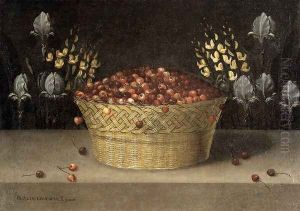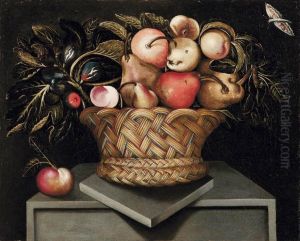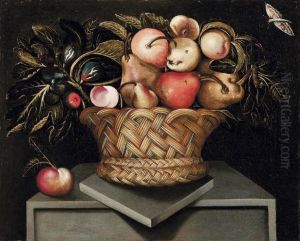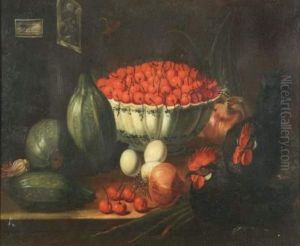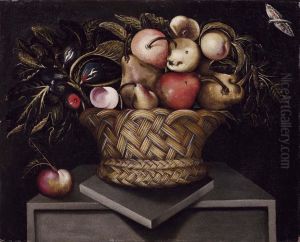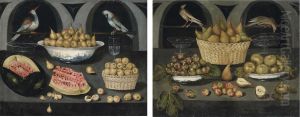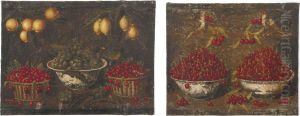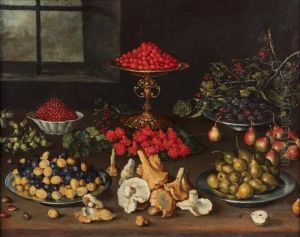Blas de Ledesma Paintings
Blas de Ledesma was a Spanish painter whose life and career are not extensively documented, and as a result, much about him remains a mystery. He is believed to have been active during the late 16th and early 17th centuries, primarily in Granada, Spain. Ledesma's work is generally associated with the Mannerist style, which was prevalent in Europe following the High Renaissance and is characterized by artificiality, grace, and elegance of design.
Ledesma is particularly noted for his still-life paintings, a genre that was gaining popularity at the time. He was one of the early Spanish artists to specialize in this type of work, which was known as 'bodegones' in Spanish. These still lifes often showcased a variety of objects, including fruits, flowers, and vessels, depicted with a remarkable attention to texture and detail.
Unfortunately, due to the lack of records, the exact dates of Blas de Ledesma's birth and death are not known. However, his existence is confirmed by the inventory of the estate of the 3rd Duke of Alcalá, which references a payment made to Ledesma for a painting in 1602. It is believed that he died around 1604, as that is the year when his presence in historical records ceases.
One of Ledesma's most recognized works is a still-life painting of apples on a plate, which is housed at the Museo del Prado in Madrid. This piece exemplifies his meticulous approach to the still-life genre, with a vivid depiction of the fruit's texture and form. Although only a handful of works have been firmly attributed to Ledesma, they have been enough to earn him a place in the history of Spanish art as one of the pioneers of the still-life genre in the country.
Despite the scarcity of information about his life and the limited number of his surviving works, Blas de Ledesma's contribution to the development of still-life painting in Spain is recognized by art historians. His paintings are valued for their quality and for the insight they provide into the evolution of still-life painting in Europe during his time.
